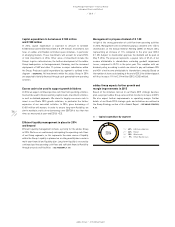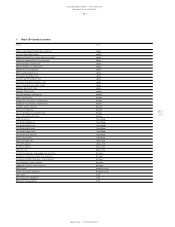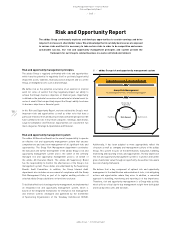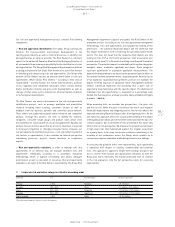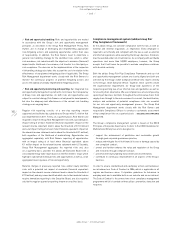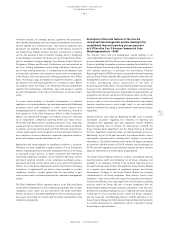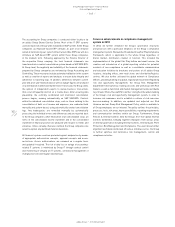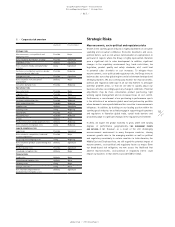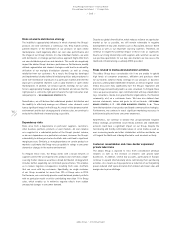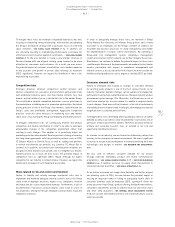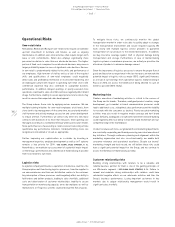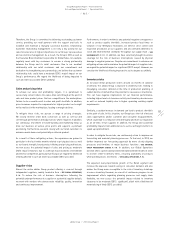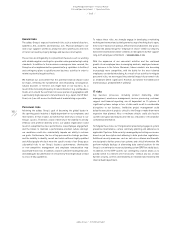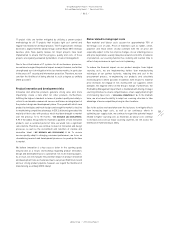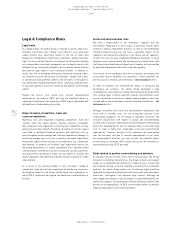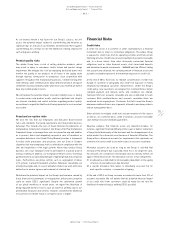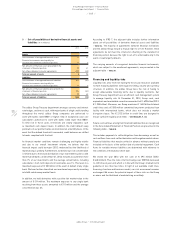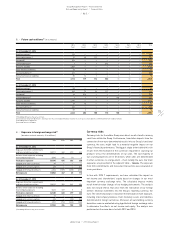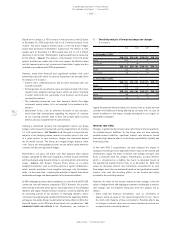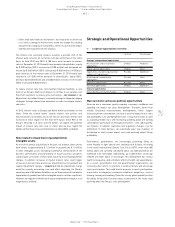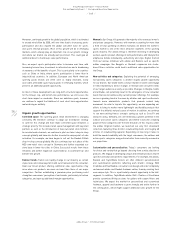Reebok 2013 Annual Report Download - page 170
Download and view the complete annual report
Please find page 170 of the 2013 Reebok annual report below. You can navigate through the pages in the report by either clicking on the pages listed below, or by using the keyword search tool below to find specific information within the annual report.
adidas Group
/
2013 Annual Report
Group Management Report – Financial Review
166
2013
/
03.5
/
Risk and Opportunity Report
/
Operational Risks
Operational Risks
Own-retail risks
New adidas, Reebok and Rockport own-retail stores require considerable
up-front investment in furniture and fixtures as well as ongoing
maintenance. In addition, own-retail activities often require longer-term
lease or rent commitments. Retail also employs significantly more
personnel in relation to sales than our wholesale business. The higher
portion of fixed costs compared to our wholesale business may cause a
larger profitability impact in cases of significant sales declines. Success
in own retail is predominantly related to the skills and performance of
our employees. High turnover of staff as well as a lack of the required
skills and qualifications of own-retail employees could negatively
affect sales and profitability. Ineffective or inconsistent leadership and
an inadequate culture with respect to operating own-retail stores with
commercial expertise may also contribute to suboptimal business
performance. In addition, delayed openings or poorly executed store
operations could lead to sales shortfalls and also negatively affect brand
image. Furthermore, inability to secure appropriate store locations may
result in a worse than expected sales development.
The Group reduces these risks by applying various measures. We run
multiple training initiatives for own-retail employees at all levels, from
store clerk to top management. At the same time, we constantly monitor
staff turnover and actively manage succession and career development
to reduce attrition. Furthermore, we almost only enter into new lease
contracts with durations of no more than ten years. Store openings are
managed according to a standardised Group-wide business plan model.
Store performance is measured by a retail scorecard consisting of nine
quantitative key performance indicators. Underperforming stores are
reorganised, remodelled or closed, as appropriate.
Further improving our sophistication as a retailer by investing in
management expertise, employee development as well as in IT systems
remains a key priority for 2014
/
SEE GLOBAL SALES STRATEGY, P. 72.
Nevertheless, we maintain our assessment of a potential major impact
on the Group’s performance and a likelihood of materialising of possible
from risks related to own retail.
Logistics risks
As a global company with business operations in numerous countries, the
Group requires well-functioning logistics processes, from the supplier to
our own warehouses and from our distribution centres to the customer.
Any interruption of these processes could negatively affect our ability to
fulfil orders and deliver products, leading to sales shortfalls, additional
costs and deterioration of customer relationships. Inability to secure
transportation or warehousing capacity, errors by employees as well as
malfunctions in IT logistics systems could all disrupt the flow of goods.
To mitigate these risks, we continuously monitor the global
transportation market in order to be able to quickly adapt to changes
in the transportation environment and secure required capacity. We
work closely with multiple logistics service providers to guarantee
transportation of our products to the desired destinations. In addition,
we buy insurance coverage against theft or physical damage during
transportation and storage. Furthermore, in case of malfunctioning
logistics systems or warehouse processes, we actively re-prioritise the
allocation of products to minimise damage caused.
Given the importance of logistics processes to ensure the proper flow of
goods and based on our experience in the last two years, we now rate the
potential impact of logistics risks as major (2012: significant). However,
as a result of our learnings from substantial logistics malfunctioning in
Russia in 2013, we assess the likelihood of being affected to such an
extent as possible (2012: likely).
Marketing risks
Flawless execution of marketing activities is critical to the success of
the Group and its brands. Therefore, unaligned product creation, range
development, go-to-market or brand communication processes could
lead to additional costs, suboptimal sales performance and the inability
to resonate with the consumer as desired. Poorly executed marketing
activities may also result in negative media coverage and hurt brand
image. Similarly, inadequate or insufficient investment in brand-building
could negatively affect our ability to maintain brand momentum and our
competitive edge in the marketplace.
In order to reduce such risks, our global and local marketing departments
are constantly cooperating and thereby ensuring consistent execution of
key initiatives. Through continuous planning and alignment within the
marketing organisation and also cross-functionally, we enable both
consumer relevance and operational excellence. Despite our brands’
marketing strength and track record, we still believe these risks could
have a significant potential impact for the Group, and we continue to
assess the likelihood of materialising as likely.
Customer relationship risks
Building strong relationships with retailers to be a valuable and
reliable business partner for them is one of the guiding principles of
our Wholesale segment
/
SEE GLOBAL SALES STRATEGY, P. 72. Failure to
cement and maintain strong relationships with retailers could have
substantial negative effects on our wholesale activities and thus the
Group’s business performance. Losing important customers in key
markets due to subpar relationship management would result in
significant sales shortfalls.


